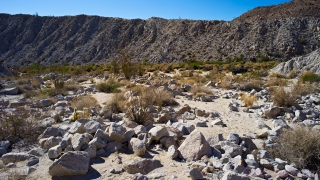The Sony a7R and wide-angle lenses don’t always play well together, as you might have seen in the 24mm lens shootout. The goal in that testing was to find a 24mm camera lens with a flat image plane, which means minimal lens curvature at the edges of the lens. These 28mm lens tests will have that same goal; find a 28mm lens that’s not blurry on the sides, before starting to think about other aspects of lens performance.
The good news is that as the focal length of the lens increases, the more compatible the lens is with the a7R and other full-frame sensor cameras. The 28mm lenses that are being evaluated here tend to bear that out, with one exception, as you’ll see in a minute.
These 28mm lenses are legacy film and/or DSLR camera lenses. The generic Albinar ADG 28mm f/2.8 lens was the cheapest. It’s labeled as “macro focus 52mm”, wherein “52” is the measurement for the filter ring. This glass was sold under a bunch of different labels, not just Albinar. It has the “MACRO 1:10 1:8 1:5 1:4” markings on the side of the lens barrel. It’s not clear who OEM’d these lenses out for so many different labels, but that same macro number configuration is also seen on Sigma prime lenses.
Which brings up the second lens being tested, the Sigma 28mm f/2.8 MiniWide II. It also takes a 52mm filter, and it’s about the same size as the cheap OEM lenses listed above. However, it handles differently, and the performance is not the same. Most significantly, the Albinar lens has a noticeable vignetting problem on the Sony a7R, even at f/10. You can see the dark corners, while the MiniWide II has clear corners at the same aperture.
The classic Vivitar 28mm f/2.0 lens rounded out the bunch. This glass has a serial number of 228*****, which means that it was manufactured by Kiron. It has a reputation for oily aperture blades, which two out of the three copies being tested did indeed have. However, when shooting with a mirrorless camera in dark conditions, a good WYSIWYG electronic viewfinder means that you don’t need to open the lens up all the way to set focus, because the EVF automatically turns up the gain, to duplicate the camera settings you are shooting at. That superior trait of an EVF, over an optical viewfinder, means that oily blades that drag when opened do not interfere with getting the shot, as might be the case with a DSLR. Oily blades only become a problem when the blades stick so badly that they don’t fully open up at every aperture setting. All three copies of this glass were made by Kiron, but one of the three copies was rejected because of haze on the inside glass. Both copies took pictures that were virtually identical to each other, so only one result was posted here.
Ease of focus at long distances: The Sigma 28mm f/2.8 MiniWide II probably gets the nod here. The lens is like new, and there isn’t any visible side-to-side shifting of the glass while focusing, as seen when looking in the EVF at magnify levels. Both of the Vivitars did that, but it didn’t seem to affect the final results. The Vivitar 28mm f/2.0 is a nice big piece of glass, but the wonderful long focus throw on it almost worked against it at these long distances. One point for the Sigma.
Lens contrast: 28mm lenses overall get the nod here, over 24mm lenses. Picking a winner among the three is tedious, because very minor exposure differences seemed to affect the contrast level. No clear winner, but the Sigma, with it’s more modern coatings, might have a slight edge.
Sides of the images: Both Vivitars take a decisive win here. A flat image plane is so important when choosing wide angle lenses on the Sony a7R, it makes a big difference. The lens half-stop detent at ~f10 or so improved the sides slightly over F8, but focusing slightly past infinity didn’t improve the sides much at all. It was a different story with the Sigma 28mm lens, if you hit just the right past-focus condition, the sides improve dramatically, and the center sharpness doesn’t get penalized too badly. But why deal with that, when you can have a lens with a flat image plane. Even the cheap Albinar ADG 28mm lens had cleaner sides than the Sigma; in fact, picture quality on the sides was a complete surprise with the Albinar. Vivitar 28mm f/2.0(3 points), Albinar 28mm f/2.8(2 points), Sigma 28mm f/2.8(disqualified).
Center of the images: Nothing stood out at the long infinity focus distances seen here. YMMV, but no clear winner seen here.
Summary: The Vivitar 28mm f/2.0 camera lens moves forward into the next round, by a big margin. The cheap Albinar had a surprisingly flat image field, but it fell apart on the left side when focused very slightly past infinity, which indicates a possible lens issue. For what it cost, you can afford to take a look at as many of these lenses as you want. Just watch out for the vignetting with full-frame sensors, it’s going to keep this lens from moving into the next round. The blurry sides of the image on the Sigma 28mm f/2.8 lens was a big disappointment, because this lens looked great and was a pleasure to use. It’s a contender for APS-C format cameras.
Here is the test image, it’s about 13mb in size, **be sure and view it at 100% size**:
https://www.codectest.com/images/28mmLensComparisonSigmaMiniWideIIalbinarADGVivitar.jpg
Dan Euritt











